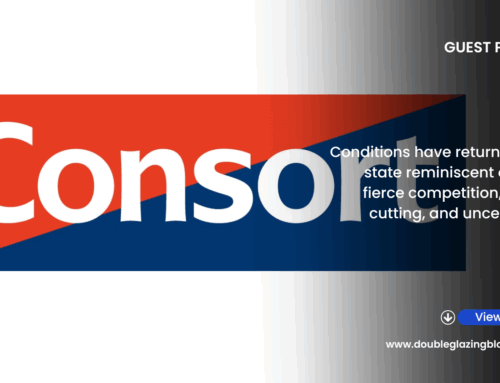A new trading update published by Safestyle UK this morning has sent their share price tumbling further. This comes after a prolonged period of decline, which has now seen more than 96% of the value of the shares in the company wiped out since their all-time-highs in 2017.
Safestyle UK trading update
This is the new trading update, published this morning by the company:
Performance update
As reported in our half year trading update on 27 July, our numerous mitigation actions returned the business to profitability at the end of the first half despite reduced volumes in this more challenging market. I am pleased to confirm that we achieved our profit expectations in July and August.
Market and trading update
The Group is now in its most important trading period of the year. This period begins in mid-August and runs through to early December as customers prepare their homes for the colder months which typically results in increased demand for our products.
Whilst our order intake went according to plan in early August, since mid-August we have fallen behind our internal forecasts and this has persisted into early September. Other independent indicators of market health, such as online search activity, indicates that the current market is performing at c.24% below the July and August levels of 2022. Pleasingly, our order intake has not fallen this far, it is currently down c.11% YoY which shows our product offering is withstanding wider market pressures better than others.
It is management’s belief that following a wet summer, the unseasonally warm weather at the end of August into the hottest early September on record is compounding the macroeconomic factors that influence current market demand levels.
Despite these challenging headwinds, the latest data from FENSA demonstrates that we are continuing to grow our market share, which is now estimated at over 8%. This growth in our market share, coupled with the proactive actions management have taken to stimulate demand and protect the business are expected to be a benefit as we move forward.
We are attempting to stimulate demand and purchase intent through online activity, the deployment of our upgraded website, discount management and our commitment to a leading consumer finance portfolio. However, the impact of an industry wide fall in volumes due to market conditions is combining with higher lead generation costs and a lower average frame rate than expected.
As a result, management has continued to take further steps to mitigate these weaker demand levels. These include reduced shifts in our factory and voluntary pay and fee waivers for the Board, alongside maintaining other measures implemented earlier in the year that have reduced annualised operating expenses by over £2m since the start of H2.
These measures alone are, however, not sufficient to fully mitigate the adverse impact of current demand and thus, volume levels in the short-term. Our best estimate is that, whilst we expect demand levels will pick up versus current levels in line with seasonal trends, we believe it is likely to be below previously expected levels. Consequently, the Board now expects the Group’s revenue for 2023 will be between £140m – £142m and consequently, underlying loss will be in the range of £(9.5)m – £(10.5)m.
On the above basis, year-end net debt is expected to be between £(5.5)m and £(6.5)m. The Group has debt facilities of £7.5m and was in a net cash position of £1.5m as at the end of its August reporting period. The trading outlook and timing of working capital outflows for the year to go are the primary cause of the expected year-end net debt position. The Group intends to engage with stakeholders to strengthen the balance sheet in order to support its recovery and help facilitate future growth.
The Board maintains the growth recovery prospects are strong and clear data highlighting the UK’s ageing housing stock in need of repair underpins this. As will be reported in the interim results statement, the Group has also made progress on its strategic priorities and our market share growth is a further sign that there remains a compelling opportunity for the business to capitalise on a market recovery and achieve its medium-term targets.
You can read the original release here: https://otp.investis.com/clients/uk/safestyle/rns/regulatory-story.aspx?newsid=1716034&cid=656
To be clear, this is a dour trading update. The silver lining trying to be painted through this very dark cloud is that the market share of the company is up 8%. But the wider context is that the entire market is down somewhere between 10-30% (according to who you listen to) and it’s likely that any market share increase is down to not only active marketing from the company, but also at the expense of other companies doing worse. The fact remains that even with market share up 8%, the performance of the company is under severe pressure indeed.
At the end of the update, the company references the UK’s ageing housing stock and the need for repairs. But this has been the case for quite some time, and with economic factors such as persistent high inflation (which may way start to creep back up again thanks to rising oil prices), higher interest rates, higher mortgages and higher cost of living, this is likely to keep consumer spending depressed.
What is telling is their reference to the end-of-year seasonal boost not being as strong as could be expected. It means they think there is going to be some kind of rise in business activity, as we are used to at this time of year, but will not be as strong as usual, which is going to impact their earnings further.
They talk about the measures taken so far to save a whopping £2m in cost savings in H2. A reduction in shifts at their factory is a sign that order intake is slowing. It is not clear in this latest trading update if there are any plans for job cuts. But you would have to imagine that if things deteriorate further then this would be on the cards.
They also use the weather to explain the slide in performance. Whilst I agree that the weather can play some part in economic factors, this is very much a bit-part reason and will not be taken with any seriousness.
As a result of this trading update, shares in the company plunged as much as 50%. At the time of writing, their share price is 4.7p per share, but had hit an intra-day low of just 4p. Trading volumes in the company are very high today, likely with investors offloading their holdings. The market cap of the company is below £6m. The predicted loss for 2023 is larger than the market cap of the entire company. They are going to be pushing the max limits of their debt facility, which may well have to be extended if the performance of the company deteriorates even further.

This is a company now clearly in distress. The value of the company on the markets is next to nothing, with a 96.5% drop in share value since their highs in 2017. As it stands, they are going to have to raise capital by either issuing more shares or findings funds from elsewhere. The alternative is looking to sell the company. It is prime for a takeover at the moment. With such a low valuation and an order book that is shrinking, it’s perhaps tempting enough for an outside investor to take a punt at the company.
To get weekly updates from DGB sent to your inbox, enter your email address in the space below to subscribe:
By subscribing you agree to DGB sending you weekly email updates with all published content on this website, as well as any major updates to the services being run on DGB. Your data is never passed on to third parties or used by external advertising companies. Your data is protected and stored on secure servers.






